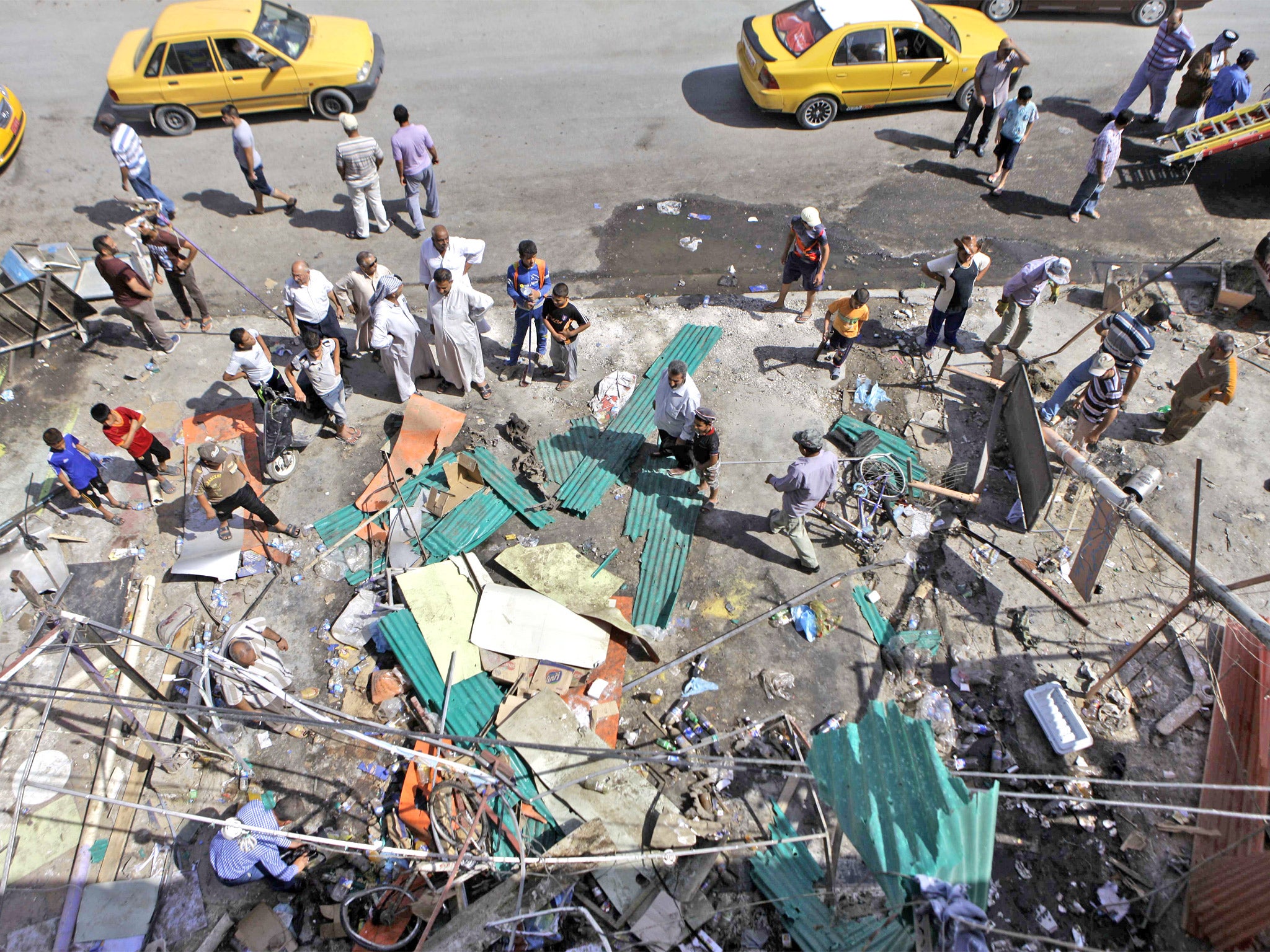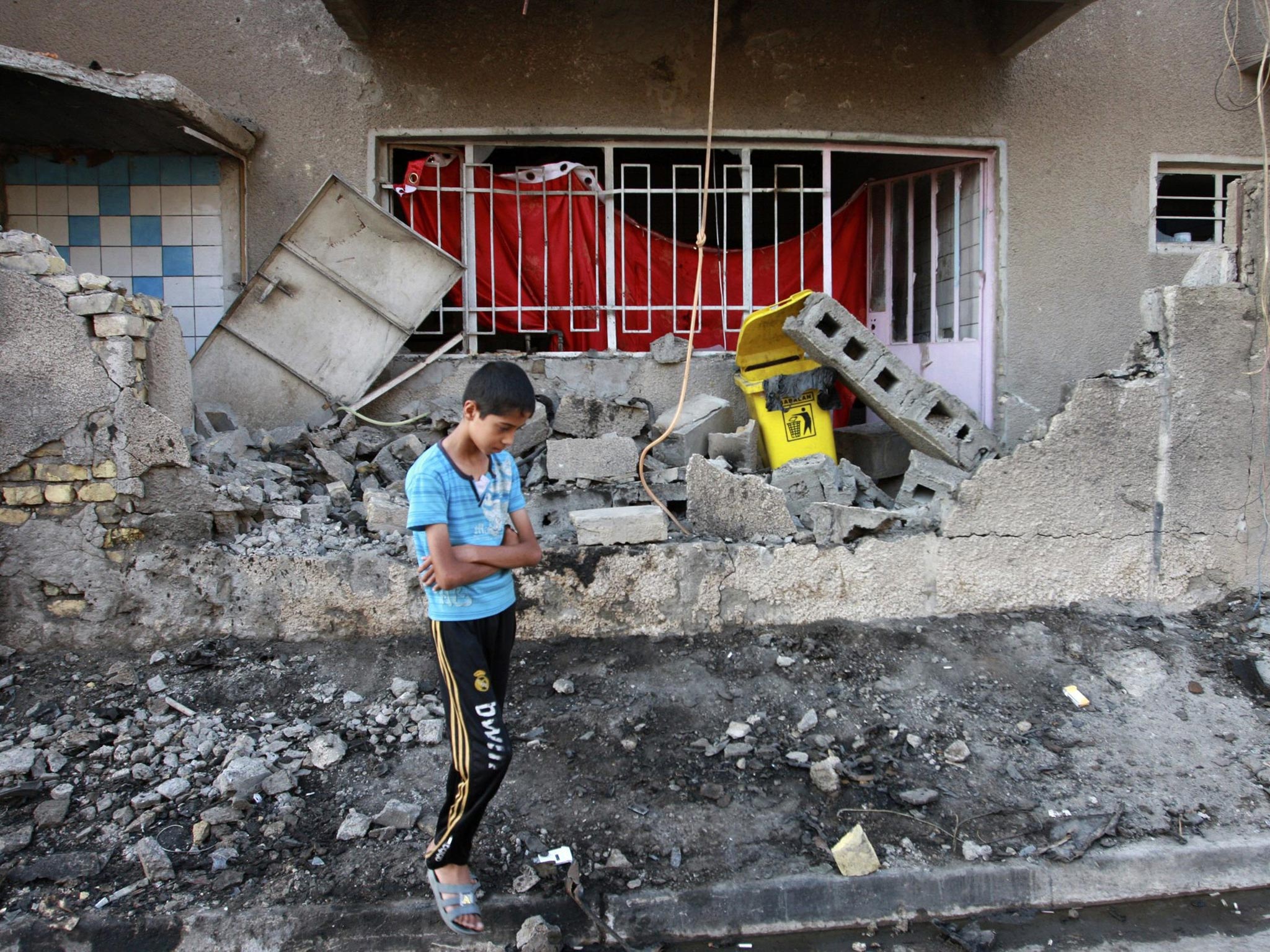Counting the cost of war: Nearly 500,000 Iraqis have been killed according to new survey
Study estimates 460,800 died between 2003 and 2011 as a direct or indirect result of the conflict

An additional half million Iraqis died because of war and occupation between 2003 and 2011 according a new survey based on more rigorous research than those carried out in the past.
The study, which is the result of a collaboration between researchers from the US, Canada and Iraq, estimates that 460,800 more Iraqis died during that period than would have done normally. Sixty per cent of the deaths were violent, with the remaining 40 per cent due to indirect causes linked to the collapse of infrastructure, the researchers claim.
The casualty figures for Iraqi civilians has been a subject of furious debate since the early days of the US occupation with the US army at first claiming that it was not counting Iraqi dead in a vain attempt to avoid the same controversy over body count as had happened in Vietnam.
Supporters of the US-led invasion appeared to consider that a lower figure for fatalities, even if it was over 100,000, justified the war while its critics believed that a higher number showed that the conflict had brought excessive and unnecessary suffering to Iraqis.
The latest figures are published in PLoS medical journal in an article entitled “Mortality in Iraq Associated with the 2003-11 War and Occupation.”
The survey conducted in 2011 is based on 2,000 randomly selected households who were asked about births and deaths in their family since 2001. All adults in each household were asked about deaths of siblings. A purpose was to compare the death rate post 2003 with the rate in the 26 months before the war and thereby work out the excess of deaths after the invasion. Previous studies had not looked at what happened after 2006 when the war was in full swing.
It remains unclear how far this type of study can be conducted in a country like Iraq in which government institutions had been degraded by sanctions since 1990 and all figures are suspect. Working out the death rate depends on assumptions about Iraq's population which is not precisely known but is estimated to be 33 million.
The study says that the researchers “had to rely on outdated census data (the last complete population census in Iraq dates back to 1887)… The researchers are 95 per cent confident that the true number of excess deaths lies between 48,000 and 751,000 - a large range.”
The survey is complicated by the large migration of Iraqis at its height in 2006-8 when many Iraqis fled to safer parts of their own country and up to a million took refuge in Syria while others fled to Jordan and Egypt. The survey estimates an extra 56,000 deaths were no counted due to migration though it is difficult to see how assumptions could be made about the death rates of people who had moved to safer places in Iraq with the purpose of staying alive.
During the 13 years of severe sanctions before the war public health had already sharply declined in Iraq because of a falling standard of living and lack of medical facilities. After 2003 many doctors fled because they were a prime target for kidnappers and Iraqis often travelled to Syria and Jordan seeking medical attention.

There were great differences in comparative safety in Iraq during the decade in which the US had troops in the country up to the end of 2011. The northern three Kurdish provinces were stable and safe and violence was less continuous in the Shia south of the country. Sectarian violence between Sunni and Shia was at its worst in Baghdad, the mixed Sunni-Shia districts around the capital and mixed provinces like Diyala. Violence between the occupation forces and the Iraqi insurgents was at its most intense in these areas but also in Anbar, the vast Sunni province in western Iraq. In the battle for Fallujah in November 2004 some 2,000 insurgents and civilians may have been killed by the US Marines.
The most convincing figures for Iraqi deaths by violence come from Iraqi Body Count (IBC) which looks at the number of people killed in verifiable incidents. In an analysis of over 31,500 incidents in the ten years up to Marc 2013 says that between 112,017 and 122,438 civilians died in addition to the death of 39,000 combatants and a further 11,500 civilians whose deaths have been revealed by Wikileaks publication of the American War logs. This would bring the full total of dead to 174,000 documented as being killed by violence in Iraq since 2003.
The height of the slaughter was during the sectarian civil war between March 2006 and March 2008 when 52,000 people were killed. The distinction between civilian and military casualties is blurred since the US forces often recorded the Iraqi dead - such as the journalists and others machine gunned from a helicopter as recorded by a video published by Wikileaks or others killed by artillery in Fallujah - as being enemy combatants. The number killed has been rising sharply over the last year with 5,000 dead since April and 258 killed so far this month.
Join our commenting forum
Join thought-provoking conversations, follow other Independent readers and see their replies
Comments